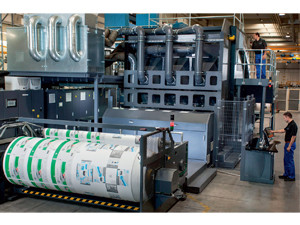 Packaging’s uptake of digital technology has so far lagged the trend in commercial print but Michael Seidl expects a combination of trends to now speed up adoption
Packaging’s uptake of digital technology has so far lagged the trend in commercial print but Michael Seidl expects a combination of trends to now speed up adoption
Whereas digital printing has established its value in traditional areas of print, its adoption has been slower in packaging, except for labelling, which began relatively early.
This is due to multiple factors: the lack of relevant digital systems available, the specific requirements of the packaging industry, a slightly more conservative mindset in packaging than in commercial print. But the tide is beginning to turn. One breakthrough moment was the Coca-Cola Share-a-Coke campaign. Just a few months later, for example, Ferrero followed suit with variable Nutella labels.
The market is growing According to the latest forecasts, the volume of the worldwide print market is set to grow to EUR420bn by 2020, up from a current level of around EUR407bn. But packaging is the only area with the global print market that will grow significantly, by 3.3% per year for a EUR141bn slice of the market by 2020. This includes folding boxes, labels and flexible packaging.
But while flexo printing is projected to grow by 2.6%, digital printing will expand 8%, significantly expanding its current 7% share of packaging print. For converters, digital printing can be a logical adjunct to analogue printing and also allow them to develop new applications. More on that later.
“Just how much digital print technologies will impact production depends on how quickly digital printing presses for the industrial production of packaging are developed,” said Hubert Marte, Forum WellpappeÖsterreich (Austrian Corrugated Cardboard Forum). “A further – very important – factor is the cost of procurement, maintenance and repair, as well as the cost of the printing inks. In addition, it has not yet been possible to achieve all Pantone colours with digital printing. Printing onto coated papers and the drying that requires also remains a serious challenge.”
The Future of Package Printing to 2019 report by Vlad Savinov, Smithers Pira, 2014, anticipates an annual growth of 17% for digital printing. This makes it the fastest growing technology within packaging print, projected to reach a volume of USD19bn by 2019.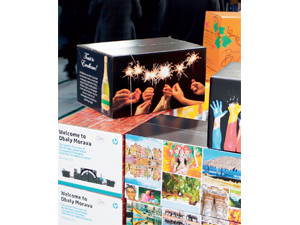
Packaging trends Consumers are meanwhile being offered more and packaging is playing a growing role in acquiring them ‘at the shelf’. “The growing trend toward smaller packaging units, ever stricter safety regulations for packaging and booming online sales will continue to drive growth in the packaging market over the next few years,” said Marte. “For this reason, it will become increasingly important that packaging is more environmentally friendly, recyclable, printed in high quality and intelligent, integrated into the Internet of Things with features like QR codes, more customisation and more.”
Eduard Fischer, managing director of Schwarzach, points to how the entire sector’s growth hinges on consumers’ behaviour. “Their buying decisions are often driven by complicated graphical and colour representations at the point of sale. This requires a high level of investment in value added processes by packaging converters in order to create packaging that stands out.”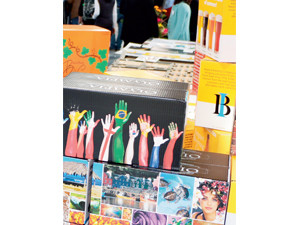
Digital’s advantages for packaging Media fragmentation means consumers are bombarded with information and messages they ignore as a matter of course. Packaging is one of the last media channels that still attracts consumer attention but this requires products that stand out on the shelf. Brand owners are responding with everfaster product cycles and more relevant packaging, which also contributes to smaller lot sizes, faster production cycles, and more demand for digital printing technologies.
Digital uptake is also affected by demographic developments such as more single-person households with different purchasing behaviours from larger families, including quantities purchased and shopping budget. Older households have unique packaging requirements that digital technology can serve. Plus consumers are more sensitive cost and environmental issues as well as convenience. For packaging producers, this means handling an increasing number of smaller orders. Turnaround times are becoming shorter and production planning is becoming more complex. Stephan Ratt, CEO of the Ratt Pack Group in Austria, sees “growth in minimum order sizes in the non-food sector.” “That means more firms here are entering the fray by acquiring digital printing presses,” he said.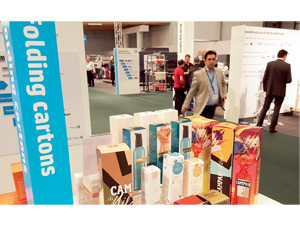
LabellingHP has now installed more than 1,000 digital presses in the market and considers digital printing has become mainstream. Xeikon has well over 300 systems installed and most of its sales now come from the packaging industry. Traditional companies have also taken the digital path, as with Heidelberg’s tie up with Gallus.
Label printshops increasingly recognise that digital printing can be used as a logical adjunct to the long print runs in flexo or offset printing. Designs can also be changed rapidly. It’s almost as if label design is turning into fashion design – some wine bottles are becoming style icons. But the digital wave now on the horizon will include flexible packaging, folding cartons and corrugated.
Flexible packaging Flexible packaging will continue to develop digitally and is also subject to social change. People eat and drink on the move. In the food sector, in particular, flexible packs are easy to handle and they fulfil the current trend for less waste and a smaller carbon footprint. The convenience factor also cannot be ignored.
Digital printing can help manufacturers of flexible packaging grow their businesses. The formula is simple: high-quality packaging, produced digitally, with just-in-time delivery. Swiss firm O. Kleiner KG was the first company in the world to install an Indigo 20000 and specialise in producing flexible packaging using flexo, gravure and more recently, digital printing.
“Digital printing is gaining importance in flexible packaging printing,” said CEO Martin Kleiner. He describes the Indigo 20000’s printing width of 736mm as opening up new markets for digital. O. Kleiner KG produces small runs as add-ons and to provide new options for customers in the smaller run sector. A good example is closures for small jam jars. While flavours such as strawberry are produced in large runs, flavours such as raspberry have smaller batch sizes. These will in future be produced using digital printing. Further applications include test packages or personalised packaging.
Folding cartons Digital printing is still relatively new in this market sector, although there are now several excellent examples of applications here. The folding carton industry tends to use the technology for small and differentiated runs: print runs before or at the end of large, conventional runs are another application.
Digital folding carton printing is currently still considered to be in the early adopter stage. A good example is Peter Sommer from Elanders in Germany who set up a website where consumers can order personalised packaging for Ritter Sport chocolate. The venture paid off, as customers were willing to pay much more.
Corrugated To date firms processing corrugated have been slow to adopt digital printing, except those using flatbed systems such as HP Scitex, Durst, Mimaki, and swissQprint. Until now, in fact, not many systems have been available for corrugated. But this will change relatively quickly due to providers such as Bobst or the HP/KBA joint venture, both of which will be exhibiting at Drupa 2016. And large players clearly see the advantages of being able to respond to market requirements more quickly to offer better service.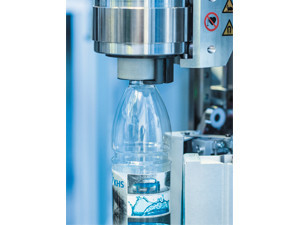
“The HP PageWide Web Press T1100S allows finishers in the high-end sector to offer added value by combining pre-print and digital printing in one machine,” said Eric Wiesner, general manager, PageWide Web Press Division at HP.
Bobst’s digital printing system for corrugated is now with beta testers. This uses Kodak’s Stream Inkjet technology and functions with food-compatible printing inks. The digital sheet press permits the personalisation of runs large and small of packaging and displays at high speeds. At an outstanding speed of up to 200m/min, the new press delivers high quality on sheets up to 1.3×2.1m.
Special applicationsA range of special applications show how versatile and creative digital printing can be in practical use. German startup mymuesli, for example, recently installed a Heidelberg Jetmaster Dimension in a retail outlet for the customised printing of muesli packaging. That means you can not only buy your favourite muesli but you can also design your own muesli container yourself with a picture and text.
KHS with Xaar has also implemented a project for printing directly onto PET bottles at the Belgian Martens Brouwerij. The digital direct printing system uses Xaar 1002 GS6 print heads and achieves a physical resolution of 360dpi where text and graphics are printed using lowmigration LED inks in 4C plus white. This means that 12,000 bottles an hour can be printed directly. “The system now allows us to change graphics in just minutes rather than weeks,” said Phil Johnson at NMP, the KHS subsidiary that developed this system.
“The use of digital technologies gives the packaging industry the ability to participate in the micro marketing trend. The option to add new designs to bottles on the fly is a powerful marketing tool that permits brands to localise and personalise their products in a customeroriented manner,”said Johnson.
Drupa 2016Visitors to Drupa 2016 will see several solutions that demonstrate the implementation of digital technology in packaging. One example of this is BenntyLanda’s nanotechnology that this time will be shown with a complete system for packaging production. It is a fascinating sector that will be stimulated by all of these developments. And above all… this is a growth market.
Author: Michael Seidl
Michael Seidl is the publisher and editor-in-chief of various specialist publications in Central and Eastern Europe. These include media such as Print & Publishing, Packaging and Visual Communication. He is extremely well-connected within the print and media industry, and in Austria and beyond is a renowned publisher and specialised journalist, speaker and organiser of various industry awards as well as a member of several industry organisations. As a co-founder of the IMA – International Media Alliance – where media from Asia, Australia and Europe combine to form an industry alliance, he has taken an important step toward achieving global influence.



